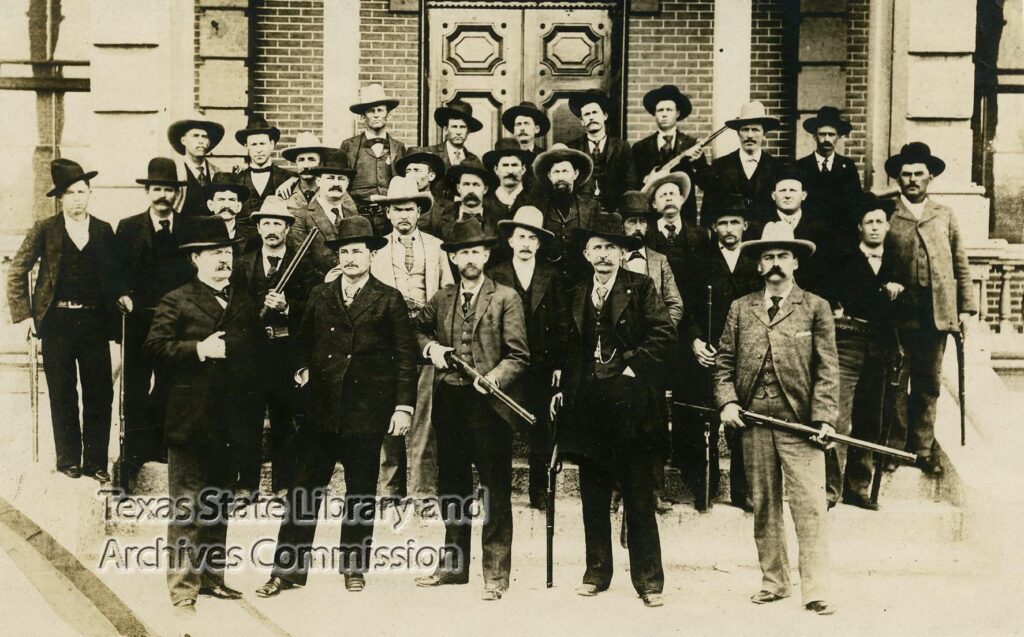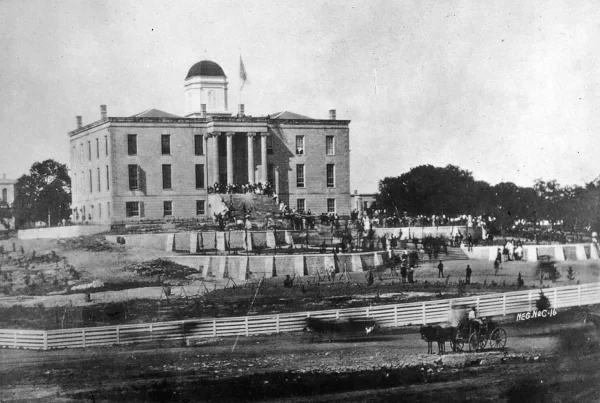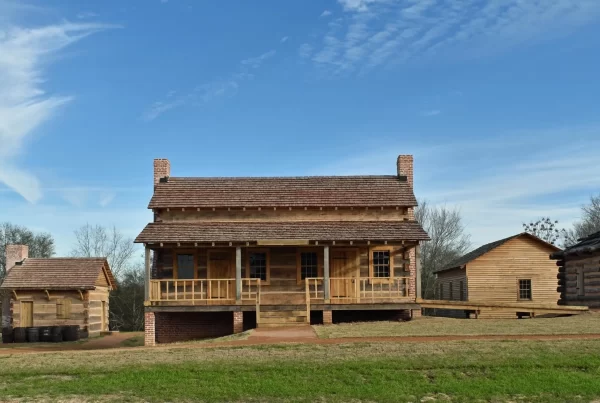A Postwar Frontier on the Edge of Law
The end of the Civil War brought dramatic upheaval to Texas. Confederate defeat and the collapse of the pre-war political order left vast stretches of the state in institutional disarray. Thousands of men returned from battle to find unclear property rights, unresolved debts, and new political hierarchies. In rural counties, elected law officers were absent, courts were backlogged, and the U.S. Army held tenuous authority during Reconstruction.
The result was a tenuous balance between formal law and informal control. Where sheriffs and constables were too few—or too cautious—residents often took matters into their own hands. Criminals and vigilantes alike flourished in this vacuum, leaving Texas with a reputation for lawlessness that would echo for generations.
The Landscape of Crime, 1865–1900
The most common frontier crimes were practical and violent: cattle rustling, horse theft, murder, and armed robbery. The explosive growth of the cattle trade in the 1870s made livestock a prime target, and rustling became a persistent plague in many counties. Stagecoach holdups, bank robberies, and train heists also became more frequent, particularly in Central and North Texas.
Some crimes were personal. Feuds between families or political factions sometimes escalated into years-long vendettas involving dozens of killings. Elsewhere, disputes over land, debt, or local elections turned deadly. In a society where firearms were common and retribution was culturally accepted, violence often begot violence.
Advertisement
Famous Outlaws of Texas
Some outlaws in 19th-century Texas became infamous for their violence, others for their evasion of lawmen. Most met brutal ends.
Sam Bass (1851–1878): Train and Stagecoach Robber
Sam Bass rose to prominence after a 1877 train robbery in Nebraska netted his gang over $60,000—at the time, the largest such theft in U.S. history. Relocating to Texas, Bass and his men carried out a string of robberies near Dallas, focusing on trains, banks, and stagecoaches. Despite efforts to maintain a courteous public persona, Bass’s actions triggered a statewide manhunt.

He was betrayed by an associate under duress and ambushed in Round Rock in July 1878. In a shootout with Texas Rangers and local lawmen, Bass was mortally wounded and died two days later—on his 27th birthday. His brief criminal career became one of the most publicized of the era, illustrating the growing effectiveness of coordinated law enforcement.
John Wesley Hardin (1853–1895): Serial Killer
Born in Bonham, Texas, in 1853, John Wesley Hardin reportedly killed his first man—a Black Union soldier—at age fifteen during the volatile early years of Reconstruction. Over the next decade, he was involved in numerous shootings, and he claimed to killed more than 20 people. Unlike many outlaws of the era, Hardin was not a thief or robber; his violence was largely personal or political, often driven by racial animosity, perceived slights, or a refusal to submit to authority. His reputation as a volatile and dangerous gunman spread across East and Central Texas, where he routinely eluded lawmen.
Captured in Florida in 1877 by Texas Rangers, Hardin was convicted of murdering a deputy sheriff and sentenced to 25 years. He served 17, studied law while imprisoned, and was pardoned in 1894. Upon release, he was admitted to the bar and moved to El Paso to practice law.
In 1895, Hardin was shot in the back of the head at the Acme Saloon by Constable John Selman, reportedly in retaliation for a personal dispute. Hardin’s violent life and abrupt death underscored the thin line between outlaw and officer in postwar Texas—where personal grudges, local politics, and informal justice often trumped legal order.
Cullen Baker (1835–1869): The Red River Marauder
Cullen Baker’s postwar crime spree in East Texas and Arkansas was marked by brutality, particularly toward Union sympathizers and freedmen. Sometimes described as a Confederate partisan, he transitioned into outright lawlessness, leading a gang that terrorized civilians and law officers alike.
His career of violence ended in 1869 under murky circumstances—either poisoned at his in-laws’ house or ambushed by local men seeking justice. His body was paraded through the streets of Jefferson, Texas, as a warning to others.
Ben Thompson (1843–1884): Gunfighter Turned Marshal
A professional gambler and deadly shot, Ben Thompson fought for the Confederacy, spent time in prison, and later served as City Marshal of Austin—a rare transition from outlaw to lawman. While in office, he maintained a strict order, but remained involved in personal vendettas and gambling feuds.
In 1884, he was ambushed and killed in San Antonio in a retaliatory attack by men linked to a theater shooting from two years earlier. Thompson’s life illustrates the fluid boundary between criminality and authority in Texas’s urbanizing towns.
Jim Miller (1866–1909): The Smiling Assassin
“Deacon Jim” Miller was both a hired killer and a part-time preacher—adding a chilling duality to his reputation. He wore a black frock coat and claimed to avoid profanity, yet he allegedly killed over a dozen men, including former Texas Ranger Pat Garrett, famous for killing Billy the Kid. His end came in Oklahoma, where he was lynched by a mob after murdering a judge.
Gregorio Cortez (1875–1916): Folk Hero
More often remembered in Chicano and borderlands history, Gregorio Cortez became famous after a deadly misunderstanding in 1901 led to a multi-county manhunt. After killing a sheriff—who allegedly shot at him first—Cortez evaded dozens of officers on horseback across hundreds of miles.

Captured and imprisoned, his case drew widespread attention, and he was later pardoned—seen by many Mexican Americans as a folk hero standing up against unjust authority. His story sits at the edge of the Wild West timeline, marking a shift toward politicized crime narratives in Texas.
The Taylor Family (Sutton–Taylor Feud, 1868–1876)
The Taylors were central to the long-running Sutton–Taylor Feud in DeWitt County, a deadly conflict over cattle, law enforcement, and pride. At its height, both sides were aligned with factions of local law—blurring the line between outlaws and officials.
Members of the Taylor family were involved in ambushes, assassinations, and public shootouts. The feud finally ended after Texas Rangers intervened and several leaders were killed or driven out. The Taylors, unlike more mobile bandits, illustrate how criminality could become embedded in community structures.
The Horrell Brothers (1870s): The Lampasas Trouble
Five brothers from Lampasas County, the Horrells engaged in lawlessness that escalated into violence against both white settlers and Mexican Americans. They were involved in the Horrell–Higgins feud, which began with local law enforcement disputes and soon led to killings on both sides.
Several Horrells were eventually killed in shootouts or executed by vigilantes. Their story reflects both the ethnic tensions of the era and the volatility of local justice, where family alliances and vendettas often overruled formal process.
The Sam and Joel Collins Gang: A Brief but Bloody Ride
Less well-known than Bass or Hardin, Sam and Joel Collins led a small gang in the early 1870s responsible for cattle theft and robbery in North Texas. Their crime spree was short-lived. Tracked by Texas Rangers, the Collins brothers were killed in separate ambushes near the Red River.
The gang’s demise illustrates a growing trend in the 1870s: Rangers acting with greater coordination, local sheriffs cooperating across jurisdictions, and outlaw groups finding it increasingly hard to move undetected.
Advertisement
The Wild Bunch: 1890s-1900s: Last of the Train Robbers
While most of the Wild West’s outlawry had faded by the turn of the century, remnants of organized banditry persisted into the early 1900s. Among the most notorious was the Wild Bunch, a loosely affiliated group led by Butch Cassidy and his companion Harry Longabaugh, better known as “the Sundance Kid.”

Though most of their activity took place in the Rocky Mountain states, members of the gang occasionally operated or passed through Texas. Their robberies were notable not only for their daring, but for their coordination and use of modern tools—telegraphs, trains, and updated firearms. Cassidy and Longabaugh famously evaded capture for years, with reports of their movements stretching from the Dakotas to the borderlands of Texas.
Cassidy and Harry Longabaugh (“the Sundance Kid”) eventually fled to Argentina, passing first through Texas en route, where they posed of a photograph that was later obtained by the Pinkerton Detective Agency and used in wanted posters. They were killed in a shootout in Bolivia in 1908. Another member of the gang, Ben Kilpatrick, served a prison sentence and returned to crime afterwards. A native of Texas, Kilpatrick was killed by a passenger during a train robbery in Sanderson, Texas in 1912.
Lawmen on the Frontier
In addition to these infamous outlaws, countless lesser-known rustlers, robbers, feuding neighbors, and hired guns shaped the day-to-day realities of 19th century Texas. Some operated alone, others moved in gangs, and many vanished into obscurity after a single violent act. Their stories rarely made headlines, or the history books. But they fueled the rise of law enforcement institutions across the frontier.
Formal law enforcement in Texas during this period was a patchwork of local sheriffs, constables, and the Texas Rangers. Sheriffs were elected by county voters and carried broad responsibilities: arresting suspects, serving warrants, leading posses, and maintaining jails. In remote areas, constables or even deputized civilians filled these roles. With limited personnel and budgets, many relied on community backing—or looked the other way.
The Texas Rangers, reorganized in 1874, formed the backbone of frontier enforcement. The new Frontier Battalion and Special Force units operated as paramilitary squads tasked with suppressing banditry, tracking fugitives, and pacifying hostile regions. Under figures like Leander H. McNelly, they achieved notoriety for bold tactics and extrajudicial actions. Though often praised for results, Rangers were also criticized for brutal interrogations, racially motivated violence, and their tendency to operate above the law.
Rangers and sheriffs occasionally clashed over jurisdiction or tactics. In some areas, local politics shaped who enforced the law—and how far they were willing to go.
Vigilantes and Rough Justice
When law enforcement failed or appeared compromised, communities sometimes turned to vigilante groups. These “committees of safety” or “regulators” aimed to enforce order through threat, violence, and spectacle. Their targets were accused rustlers, murderers, arsonists—or anyone seen as disruptive.
The town of Fort Griffin witnessed a wave of vigilante hangings in the late 1870s, as residents responded to cattle theft with frontier gallows. In Mason County, a German-led vigilance committee executed suspected rustlers during the Hoodoo War of 1875–76, leading to retaliatory killings and further breakdown of local order.
While some vigilantes operated under a veneer of due process—holding mock trials or public votes—others acted secretly and swiftly. Accused men were dragged from jails or intercepted on the road, lynched beneath oak trees, and left as warnings.
Although most vigilante actions during this period involved theft or local feuds, racial violence was a troubling and ever-present feature of frontier justice. During the Reconstruction and Jim Crow eras, Black Texans were disproportionately targeted by lynch mobs, often without credible evidence or trial. However, most anti-Black violence in Texas took place farther from the frontier, in the eastern and coastal regions, which had the largest Black populations.
In South and West Texas, Mexican Americans were likewise vulnerable to extrajudicial violence, particularly in land disputes or when accused of cattle theft.
Courts and the Rule of Law
The evolution of Texas’s court system between 1865 and 1900 marked a slow but significant shift toward formal justice. After the Civil War, Texas courts faced deep dysfunction. Many counties lacked full slates of officials; records had been destroyed, and laws rewritten under federal oversight. During Reconstruction, military governors appointed judges in many districts, undermining legitimacy in the eyes of locals.
But by the late 1870s, Texas began to rebuild its judicial institutions. The 1879 Penal Code and Code of Criminal Procedure standardized definitions of crimes, rules for evidence, and trial procedures. County and district courts expanded their jurisdictions, and appeals processes were formalized. By the 1890s, a growing caseload prompted the creation of intermediate courts of appeals to relieve the overburdened state Supreme Court.
Local justice remained uneven. Sheriffs and justices of the peace held wide discretion, especially in rural counties. Trials could be swift or indefinitely delayed. Some communities lacked court buildings altogether, using churches or saloons for proceedings. Yet the increasing frequency of legal executions and prison sentences signaled a move away from vigilante justice and toward institutional punishment.
The End of the Frontier

By 1900, Texas was no longer a frontier in the classic sense. Railroads connected distant towns. Oil discoveries shifted the state’s economy from cattle to industry. The law reached more firmly into rural areas, and law enforcement agencies began to professionalize. The Texas Rangers themselves transitioned from a frontier force to a more bureaucratic body—particularly after the legislature’s Canales Investigation of 1919, which exposed abuses committed against Mexican-American communities in the Rio Grande Valley in the 1910s.
The era of the outlaw did not end overnight. But the conditions that had sustained it—vast lawless terrain, weak institutions, and cultural acceptance of violence—began to fade. Juries grew more assertive. Governors granted fewer pardons. And communities, increasingly tied to state and national systems, grew more willing to entrust justice to the courts.
The legends of this era remain deeply embedded in popular imagination. Behind every shootout or manhunt in film were real questions about power, justice, and the responsibility of individuals when faced with lawlessness and injustice. The Wild West era may be over, but its influence on Texan identity, law enforcement culture, and public memory endures to this day.



